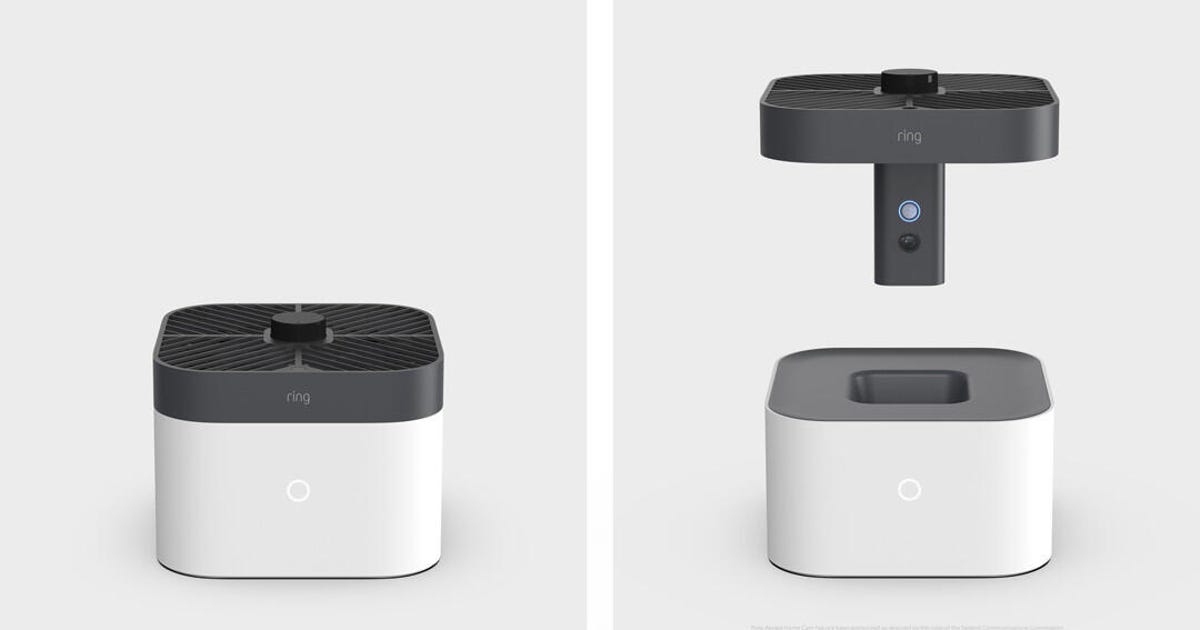
Amazon's new Ring camera is actually a flying drone -- for inside your home
Update, Sept. 28, 2021: Amazon hosted an event today to show off the latest editions to its growing lineup of devices as well as updates on its services. You can read a recap on our event coverage page. Original story follows.
Read more: Amazon's smart products lead the market even as trust in the company lags
Ring introduced a new product to its growing roster of smart home devices -- the Ring Always Home Cam. Unlike the Amazon company's other security cameras, the Always Home Cam is a flying camera drone that docks when it isn't in use. The Ring Always Home Cam will be available in 2021 for $250.
Along with this hardware announcement, Ring says you'll be able to turn on end-to-end encryption in the Ring app's Control Center "later this year" in an effort to improve the security of its devices.
Read more: Amazon's Ring drone camera sets a bad precedent for privacy
A bit of Ring history
Before Ring was Ring, it was a startup called Bot Home Automation. Bot Home's inaugural product, the 2014 Doorbot, was among the first video doorbells on the market. It had a lot of problems, however -- clunky design, limited features and poor performance. Then Bot Home rebranded to Ring, was purchased by Amazon and now sells a growing variety of smart home security and automation devices and related accessories.
Ring has been in the news for its Neighbors program partnership with law enforcement agencies, which allows Ring customers to share their saved video clips. Privacy advocates express concern about how Ring and law enforcement agencies collect and use the information they gather. Ring also has patents for facial recognition technology that would scan through law enforcement databases.
Security has also been a big topic of conversation, following user data being exposed in December 2018. This prompted Ring to require two-factor authentication and add a privacy and security Control Center in the app where customers can more easily find and make changes to their personal account settings.
The Always Home Cam and end-to-end encryption
Ring says the Always Home Cam travels on a set path you designate -- it can't be controlled manually -- and you can view the feed live in the Ring app. "The path is entirely determined by the customer ... you actually walk the device around your home and ... train it on that path and can set different waypoints for the camera to fly to," Ring President Leila Rouhi told me over the phone.
It has HD live streaming and a 5-minute runtime, and takes about an hour to charge. Rouhi said that short runtime was deliberate, to make it a "purpose-driven security camera."
It can work with the Ring Alarm security kit, so that if activity is detected while your security system is set to away mode, the Always Home Cam is supposed to leave its dock and fly around to see what's happening.
As far as privacy goes, the Always Home Cam's camera is hidden when it's docked and should only begin to record when it leaves the dock and flies around your house. It's designed to hum so you know when it's flying and recording. The camera is also equipped with "obstacle avoidance technology," so it should avoid things in its path. If it does sense an obstacle in the way of its normal path, the camera will return to its dock and send an alert, letting you know it couldn't complete its pass around your home.
Ring has also added a video encryption page to its Control Center privacy and security landing page. After end-to-end encryption becomes available later this year, customers should be able to turn on the feature for each individual compatible device. Ring will be providing a list of compatible devices later this year.
Source





